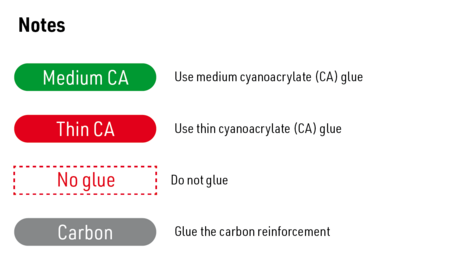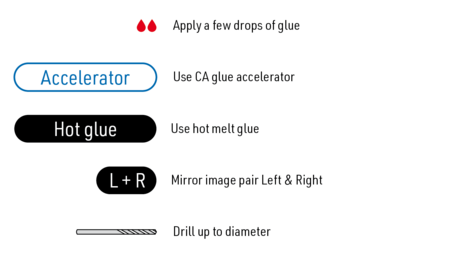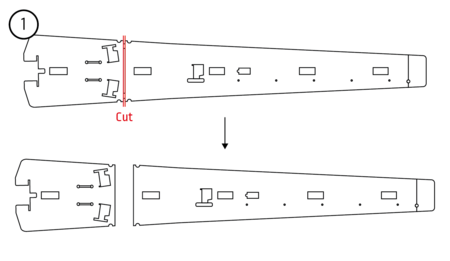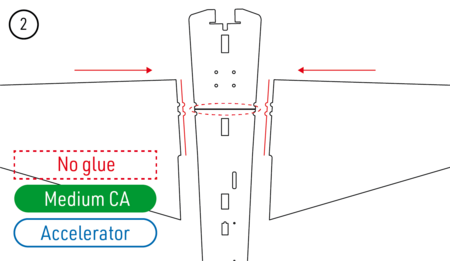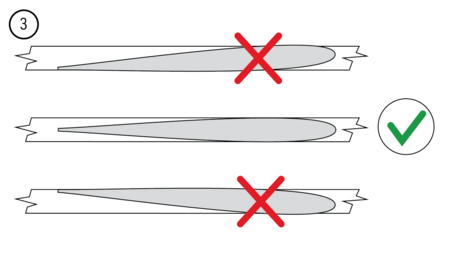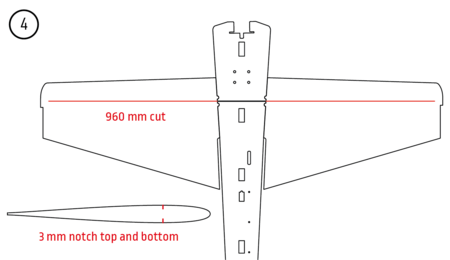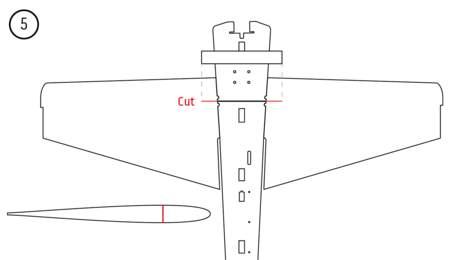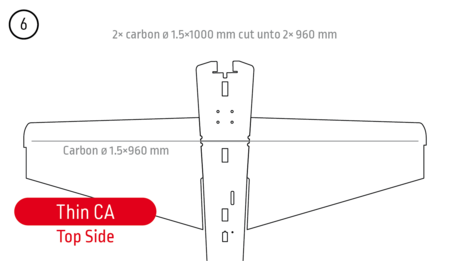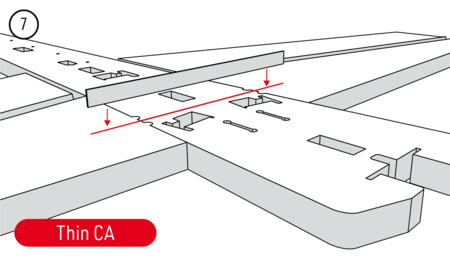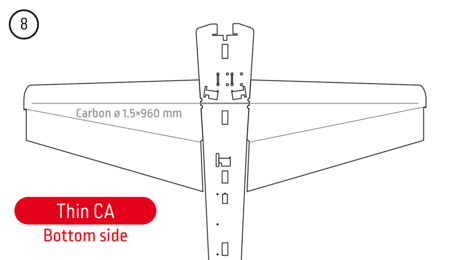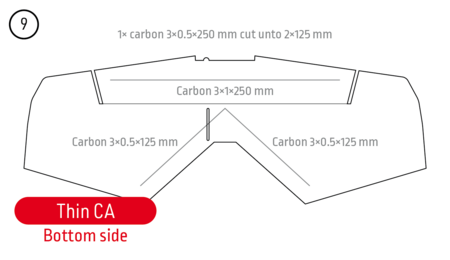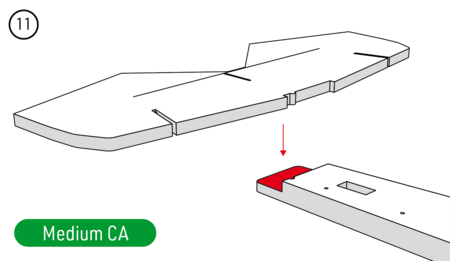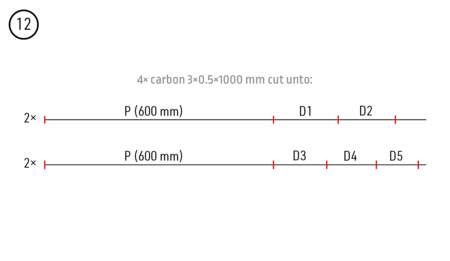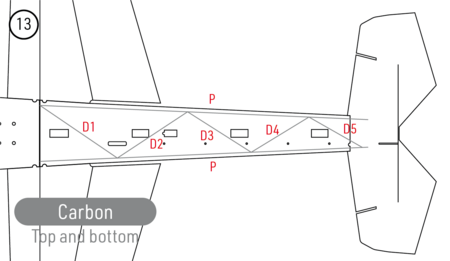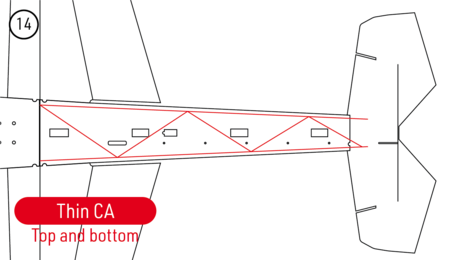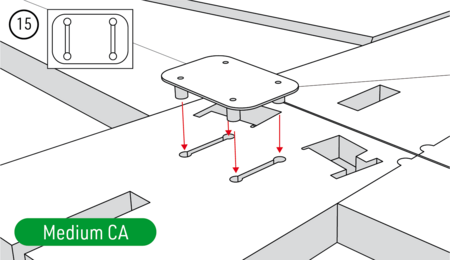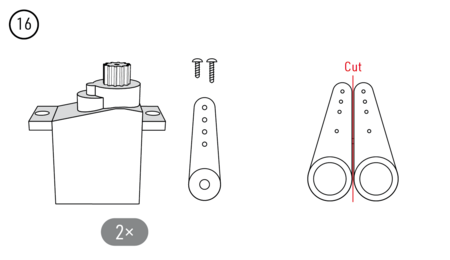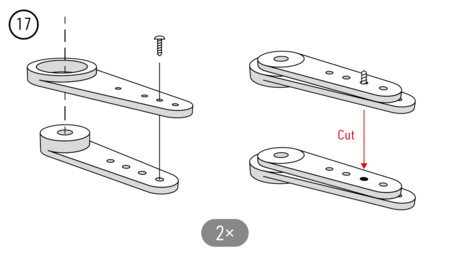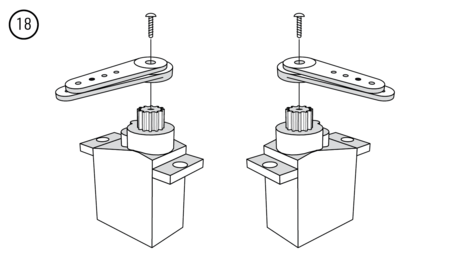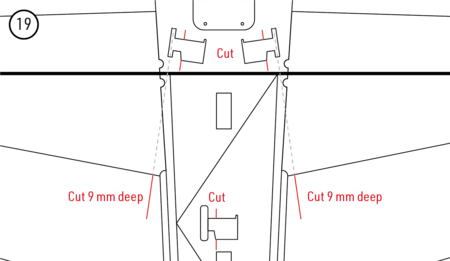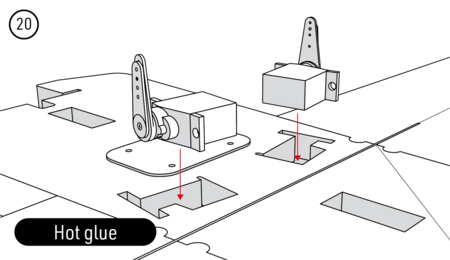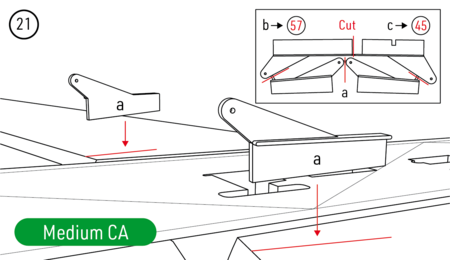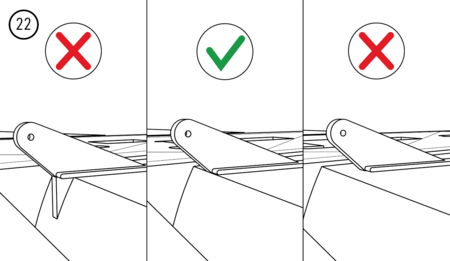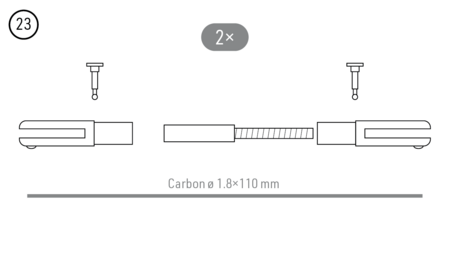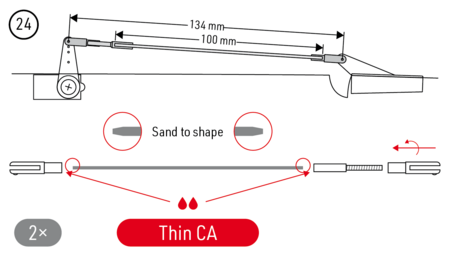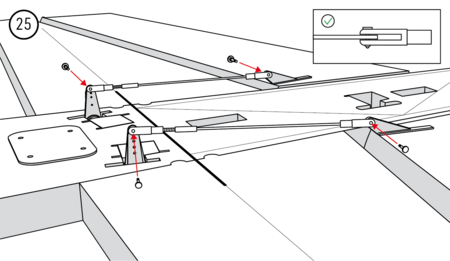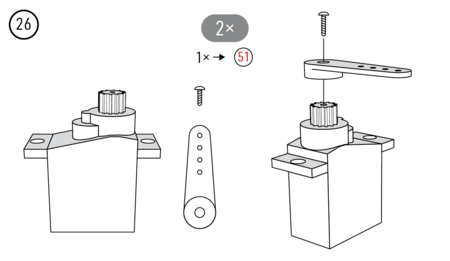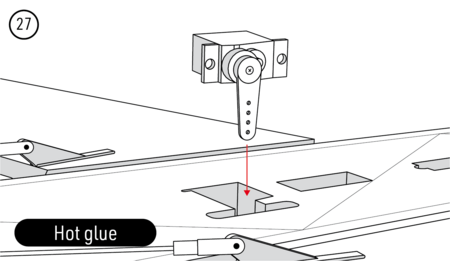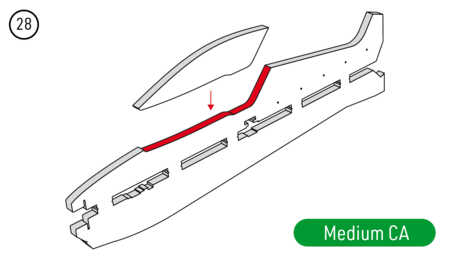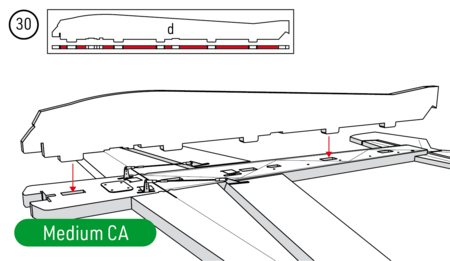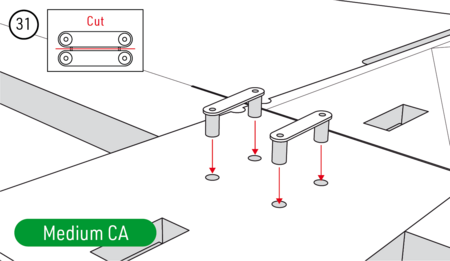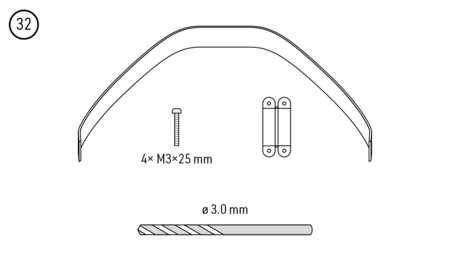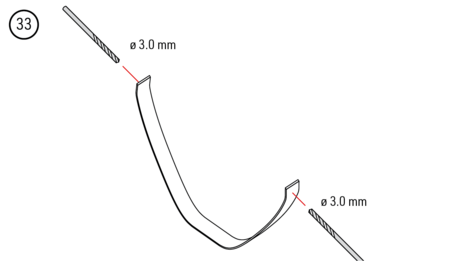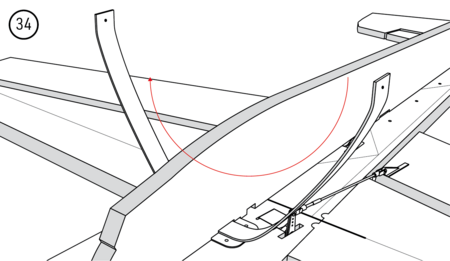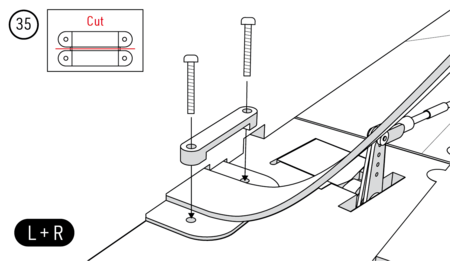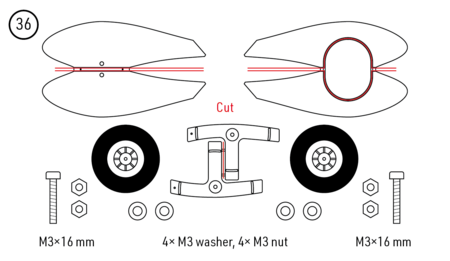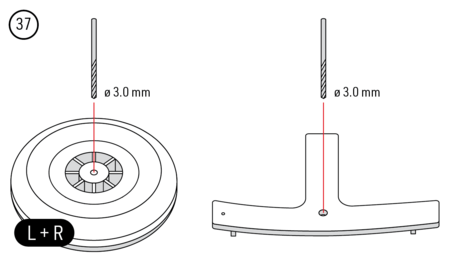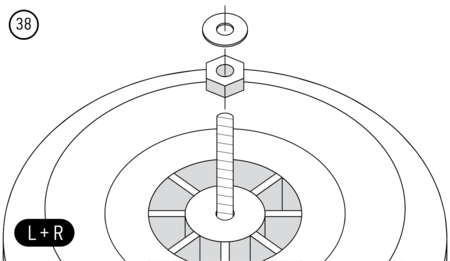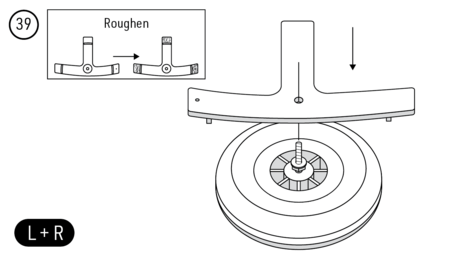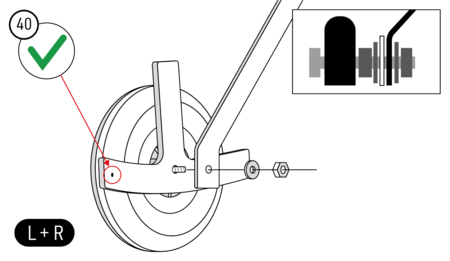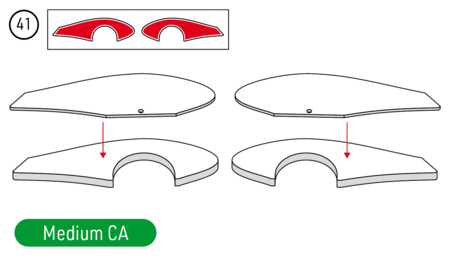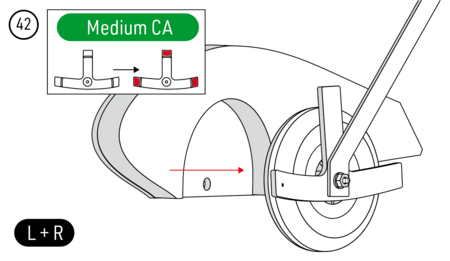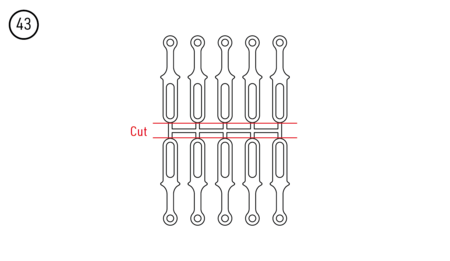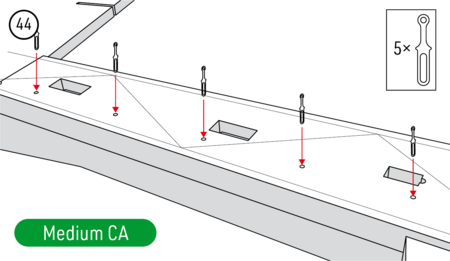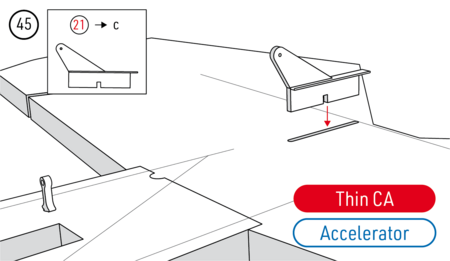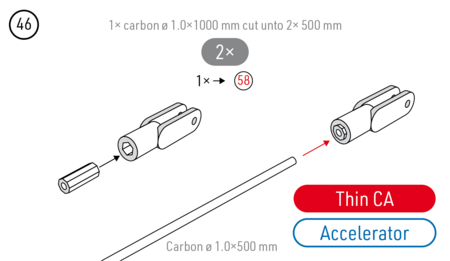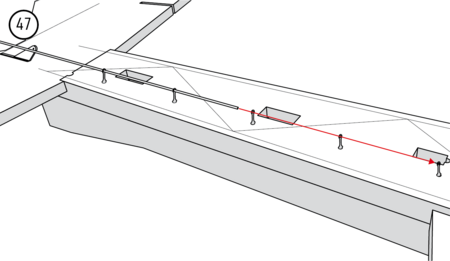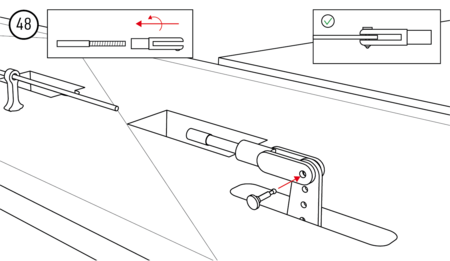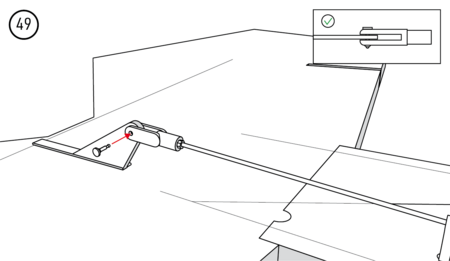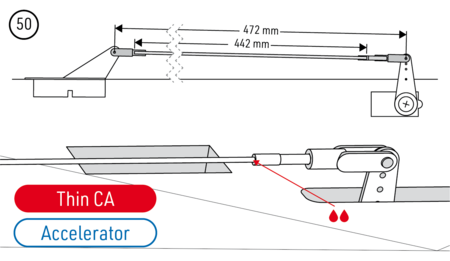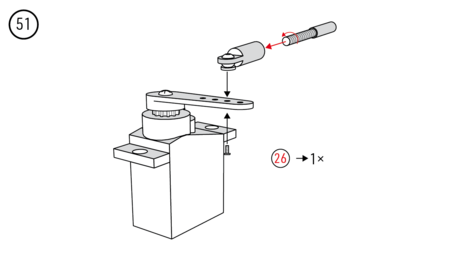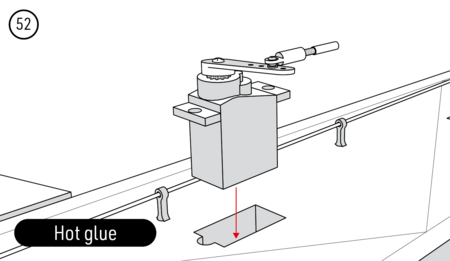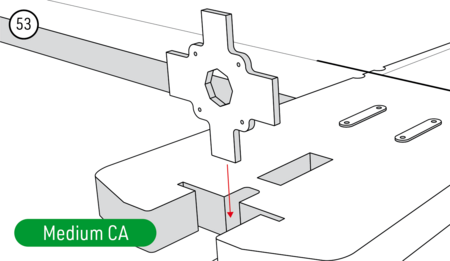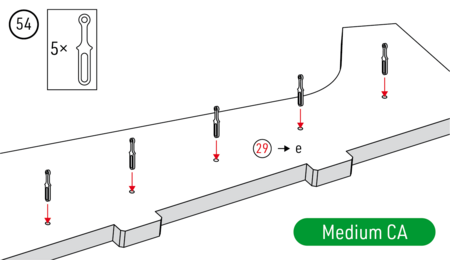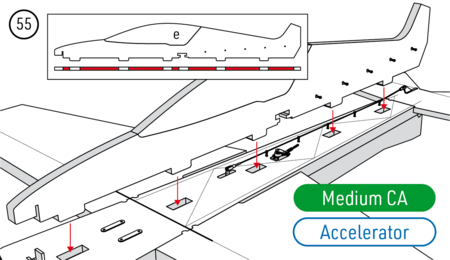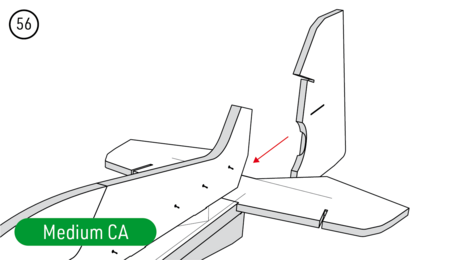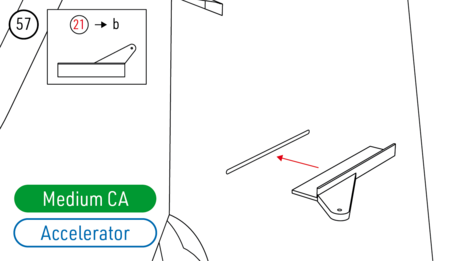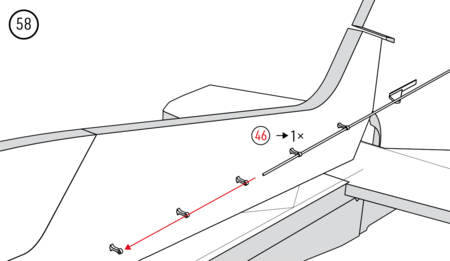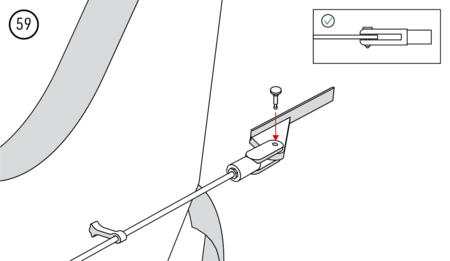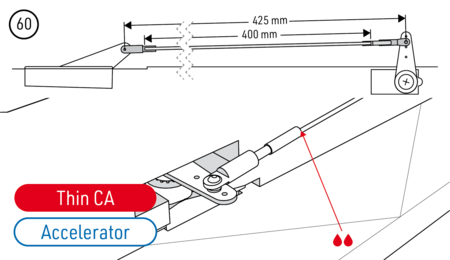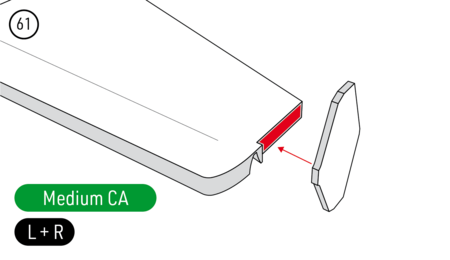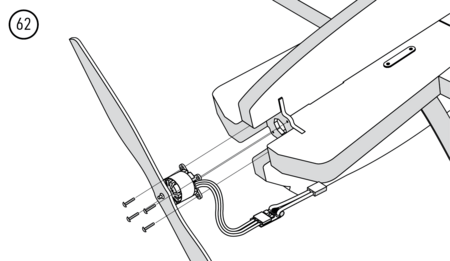KAVAN Savage Mini - Bauanleitung
Einführung
Herzlichen Glückwunsch zum Kauf des 3D-Kunstflugmodells SAVAGE Mini! Sie sind der Besitzer des nahezu unzerstörbaren Schaumstoffmodells aus EPP (extrudiertes Polypropylen) geworden, das mit einem leistungsstarken BrushlessMotor angetrieben wird, der von LiPo-Akkus versorgt wird. Jeder, wer es bereits schafft, mit einem Modell mit Querrudern zu fliegen, wird das Steuern von SAVAGE Mini genießen!
Bevor Sie beginnen
- Falls Sie kein erfahrener Pilot sind, nehmen Sie die Hilfe eines kompetenten Piloten in Anspruch, der ihr zusammengebautes Modell überprüft und bei den Erststarts hilft. Obwohl wir Ihnen eine vollständige Anleitung zur Verfügung gestellt haben, ist ein Modellflugzeug ziemlich kompliziert und ein erfahrener Modellbauer kann schnell ihr Modell überprüfen und somit sicherstellen, dass ihre ersten Flüge erfolgreich werden.
- Bitte bauen Sie Ihr Modell genau nach dieser Anleitung auf. Versuchen Sie nicht es zu modifizieren oder zu verändern, da dies die Flugeigenschaften negativ beeinflussen kann.
- Bevor Sie beginnen, prüfen Sie den Inhalt des Baukastens auf Vollständigkeit und prüfen Sie, dass keine Teile beschädigt sind. Es hilft auch, sich mit den Teilen des Modells vertraut zu machen. Falls Teile fehlen oder beschädigt sind, wenden Sie sich umgehend an Ihren Händler. Berücksichtigen Sie, dass Ihr Händler keinen Baukasten zurücknehmen kann, bei dem mit dem Bau bereits begonnen wurde.
- Versuchen Sie zuerst die Teile zusammenzufügen, bevor Sie sie verkleben. Versichern Sie sich vor dem Zusammenbau, dass sie die korrekten Teile benutzen und dass sie gut zusammenpassen. Auch viel Kleber kann schlecht passende Teile nicht zurecht machen.
- Die Anleitung zeigt die Standardeinstellung des Schwerpunktes (CG) und empfohlene Ruderausschläge. Bitte berücksichtigen Sie, dass es wesentlich ist, den empfohlenen Schwerpunkt für die ersten Flüge beizubehalten, ansonsten könnte das Modell unstabil und schwer fliegen, oder gar nicht fliegen. Sie können den Schwerpunkt später tunen, um ihn an ihren Flugstil und ihr Können anzupassen.
Vorsichtsmaßnahmen
Dieses RC-Modell ist kein Spielzeug. Benutzen Sie es mit Vorsicht und befolgen Sie die Anweisungen in dieser Anleitung genau.
Sie sich an die Anweisungen in dieser Anleitung. Bauen Sie das Modell gemäß der Anleitung zusammen. Modifizieren und verändern Sie das Modell nicht. Bei Nichteinhaltung erlischt die Garantie. Folgen Sie der Anleitung um ein sicheres und haltbares Modell nach dem Zusammenbau zu erhalten.
Kinder unter 14 Jahren müssen das Modell unter Aufsicht eines Erwachsenen betreiben.
Assure that the model is in perfect conditions before every flight, taking care that all the equipment works correctly and that the model is undamaged in its structure.
Fly only in days with light breeze and in a safe place away from any obstacles.
Safety precautions and warnings
- An RC aeroplane is not a toy! If misused, it can cause serious bodily harm and damage to property. Fly only in a safe place following all instructions and recommendations in this manual. Beware of the propeller! Keep loose items that can get entangled in the propeller away from the spinning propeller, including loose clothing, or other objects such as pencils and screwdrivers. Ensure that your and other people’s hands and faces are kept away from the rotating propeller.
- As the user of this product, you are solely responsible for operating it in a manner that does not endanger yourself and others or result in damage to the product or the property of others. This model is controlled by a radio signal, that is subject to interference from many sources outside your control. This interference can cause momentary loss of control, so it is advisable to always keep a safe distance in all directions around your model, as this margin will help to avoid collisions or injury.
- Never operate your model with low transmitter batteries.
- Always operate your model in an open area away from power lines, cars, traffic, or people. Avoid operating your model in populated areas where injury or damage can occur.
- Carefully follow the directions and warnings for this and any optional support equipment (chargers, rechargeable batteries, etc.) which you use.
- Keep all chemicals, small parts and anything electrical out of the reach of children.
- Moisture causes damage to electronics. Avoid water exposure to all equipment not specifically designed and protected for this purpose.
- The model is mostly made of plastics – it is not fireproof. It may not be exposed to higher temperatures, otherwise severe distortion of the foam airframe or other damage may occur.
Specification
| Wingspan | 1000 mm |
| Length | 1020 mm |
| All–up weight | ca 500 g |
You will also need
- At least four channel RC set, a power unit with 3S LiPo flight pack and servos - refer to "Recommended power systems and servos".
- Regular modeller’s tools: modeller’s knife (KAV66.770), screwdrivers, pliers, electric drill with drill bits (3.0 mm), No. 180–360 sandpaper, etc.
- Glue: medium (#KAV56.9952) and thin (#KAV56.9951) CA glue, accelerator for CA glue (#KAV56.9958 / #KAV56.9959), hot melt glue.
Recommended power systems and servos
- Sunday 3D: For 3D aerobatic beginners and Sunday flyers.
- 3D: For everybody who likes it hot and 3D.
| Sunday 3D | 3D | |
|---|---|---|
| Motor | KAVAN C2830–1300 | KAVAN PRO 2830–1300 |
| Propeller | APC 9×4.7"SF | APC 10×4.7"SF |
| ESC | KAVAN R–30B | KAVAN PRO–30SB |
| Battery | KAVAN LiPo 11.1V 1300mAh 40/80C |
KAVAN LiPo 11.1V 1300mAh 40/80C |
| Servos | KAVAN GO–13MG, Hitec HS- -65MG, HS–70MG |
KAVAN GO–1013MG, Hitec HS–5065MG, HS–5070MH |
Assembly
Follow the illustrated, step-by-step building manual on pages 9–15 please.
RC set installation and preflight check
- Referring to the instruction manual of your radio carefully hook up the onboard electronics. Correct linkage length - refer to assembly steps 24, 50 and 60 please.
- Once everything has been correctly connected, turn on your transmitter and plug in the flight pack. Check the neutral positions and throws of all control surfaces. If you needed to make the control surface throws smaller, simply move the pushrod closer to the centre on the servo arm or move it far from the control surface on the control horn. And vice versa.
| Recommended throws | Low rate | High rate | ||
|---|---|---|---|---|
| Rate | Expo | Rate | Expo | |
| Ailerons | ± 30° | 45 % | ± 44° or more | 40 % |
| Elevator | ± 30° | 45 % | ± 50–60° | 45 % |
| Rudder | ± 35° | 50 % | ± 47° | 50 % |
- The "Low rate" recommended control surface throws are suitable for a less skilled pilot and classic pattern aerobatics. The "High rate" setting is for 3D aerobatics and skilled pilots.
- Check the direction of rotation of the propeller. If it was incorrect, simply swap two of the tree wires between the ESC and motor or program the ESC (refer to the ESC manual).
- Attach the flight pack to the side of the bottom part of the fuselage using a strip of hook-and-loop tape to get the correct position of the centre of gravity (CG) 230 mm, refer to Fig. 63. You can fine tune the CG position later in order to suit your flying style.
- Fully charge your flight pack and transmitter batteries, check the proper function of your radio and perform the range check of your radio according to its instruction manual. The range has to be almost the same with the motor off and at full throttle (no more than 10 % decrease is acceptable). DO NOT try to fly unless the range check is 100% successful.
Flying
The test flying and fine-tuning is pretty much straightforward. There will be no surprise for a medium-advanced pilot that is supposed to fly this model.
Parts list
If in doubts, the manual step No. will help you identify the part.
| Part | Qty | Material | Dimensions | Step No. |
|---|---|---|---|---|
| Instruction manual | 1 | paper | A4 | - |
| Fuselage - vertical part | 1 | EPP | - | 28 |
| Fuselage - horizontal part | 1 | EPP | - | 1 |
| Wing - left + right | 1+1 | EPP | - | 2 |
| Canopy | 1 | EPP | - | 28 |
| Fin and rudder | 1 | EPP | - | 56 |
| Horizontal stabilizer + elevator | 1 | EPP | - | 9 |
| Wheel pant | 2+2 | EPP | - | 41 |
| Side force generator | 2 | EPP | - | 61 |
| Main undercarriage | 1 | carbon | - | 32 |
| Carbon parts bundle | Qty | Material | Dimensions | Step No. |
|---|---|---|---|---|
| Wing spar | 2 | carbon | Ø 1.5×1000 mm | 6 |
| Fuselage reinforcement | 4 | carbon | 3×0.5×1000 mm | 12 |
| Horizontal tailplane reinforcement | 2 | carbon | 3×0.5×250 mm | 9, 10 |
| Horizontal tailplane reinforcement | 1 | carbon | 3×1×250 mm | 9 |
| Elevator + rudder push rod | 1 | carbon | Ø 1.0×1000 mm | 46, 50, 60 |
| Small accessories bag | Qty | Material | Dimensions | Step No. |
|---|---|---|---|---|
| Firewall | 1 | plywood | 3 mm | 53 |
| Wing joiner | 1 | plywood | 1 mm | 7 |
| Aileron push rod | 2 | - | Ø 1.8×110 mm | 23 |
| Aileron, elevator, rudder horns | 1 set | plastic | - | 21, 45, 57 |
| Tailskid | 1 | plastic | - | - |
| Undercarriage plate | 1 | plastic | - | 15 |
| Wheel | 2 | plastic | Ø 40 mm | 36 |
| Wheel pant holder | 2 | plastic | M3×16 mm socket screw | 36 |
| Wheel axle | 2 | steel | M3 | 36 |
| M3 nut | 4 | steel | M3×25 mm socket screw | 36 |
| M3 washer | 4 | steel | - | 36 |
| Undercarriage bolt | 4 | steel | - | 35 |
| Undercarriage bolt holder | 2 | plastic | - | 31 |
| Undercarriage bracket | 2 | plastic | - | 32 |
| Clevis | 7 | plastic | - | 23, 46, 59 |
| Clevis pin | 7 | brass | - | 23, 46, 59 |
| M2 ball link | 1 | plastic/brass | - | 51 |
| Part | Qty | Material | Dimensions | Step No. |
|---|---|---|---|---|
| M2/1 threaded coupler | 2 | brass | - | 48, 51 |
| M2/2 threaded coupler | 2 | brass | - | 23 |
| Clevis spacer | 2 | plastic | Ø 2 mm | 46 |
| Push rod guide | 10 | plastic | - | 43 |
| Aileron servo arm | 2 | plastic | - | 16 |
| Motor mount screw | 4 | steel | Ø 2.9×6 mm | 62 |
Assembly
Follow the illustrated, step-by-step building manual below.
Guarantee
The KAVAN Europe s.r.o. products are covered by a guarantee that fulfils currently valid legal requirements in your country. If you wish to make a claim under a guarantee, please contact the retailer from whom you first purchased the equipment. The guarantee does not cover faults caused in the following ways: crashes, improper use, incorrect connection, reversed polarity, maintenance work carried out late, incorrectly or not at all, or by unauthorised personnel, use of other than genuine KAVAN Europe s.r.o. accessories, modifications or repairs which were not carried out by KAVAN Europe s.r.o. or an authorised KAVAN Europe s.r.o., accidental or deliberate damage, defects caused by normal wear and tear, operation outside the Specification, or in conjunction with equipment made by other manufacturers. Please be sure to read the appropriate information sheets in the product documentation!
If you have any questions about the SAVAGE Mini and its operation, please contact the technical and service staff at KAVAN Europe s.r.o. by e-mail (info@kavanrc.com for general technical information, service@kavanrc.com for service) or by phone (+420 466 260 133 for general technical information, +420 463 358 700 for service), during working hours 8:00 AM–4:00 PM CET, Monday to Friday).
